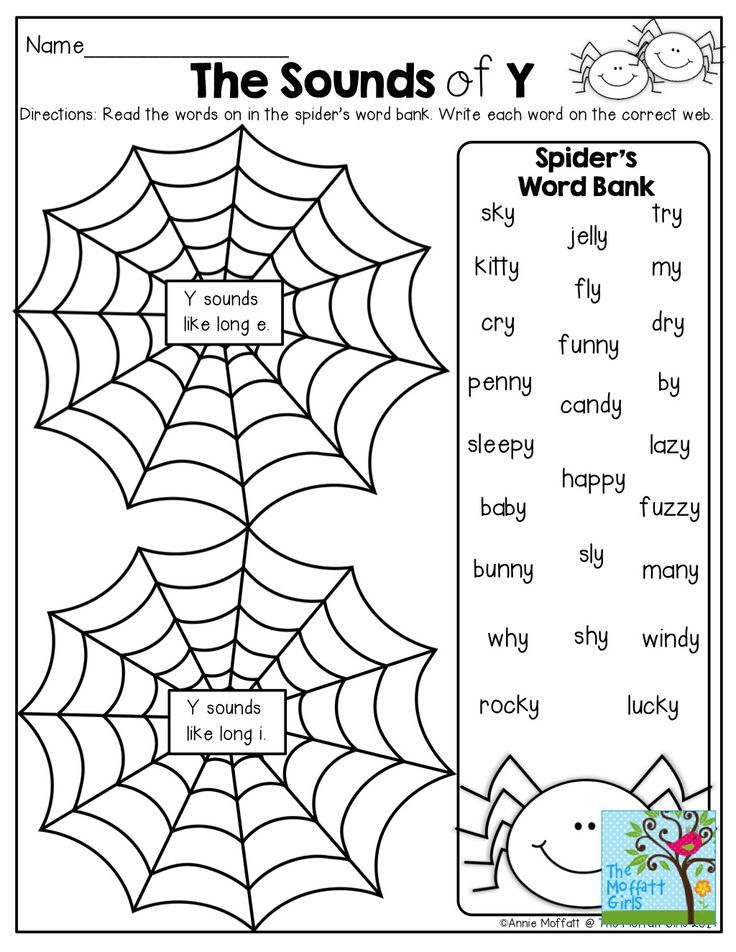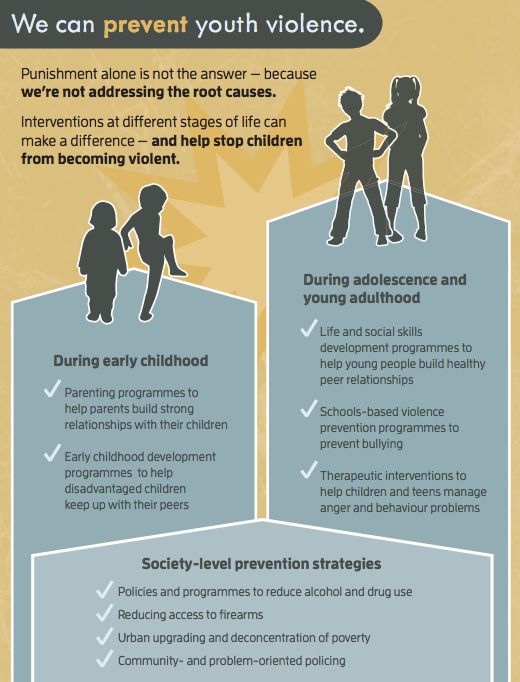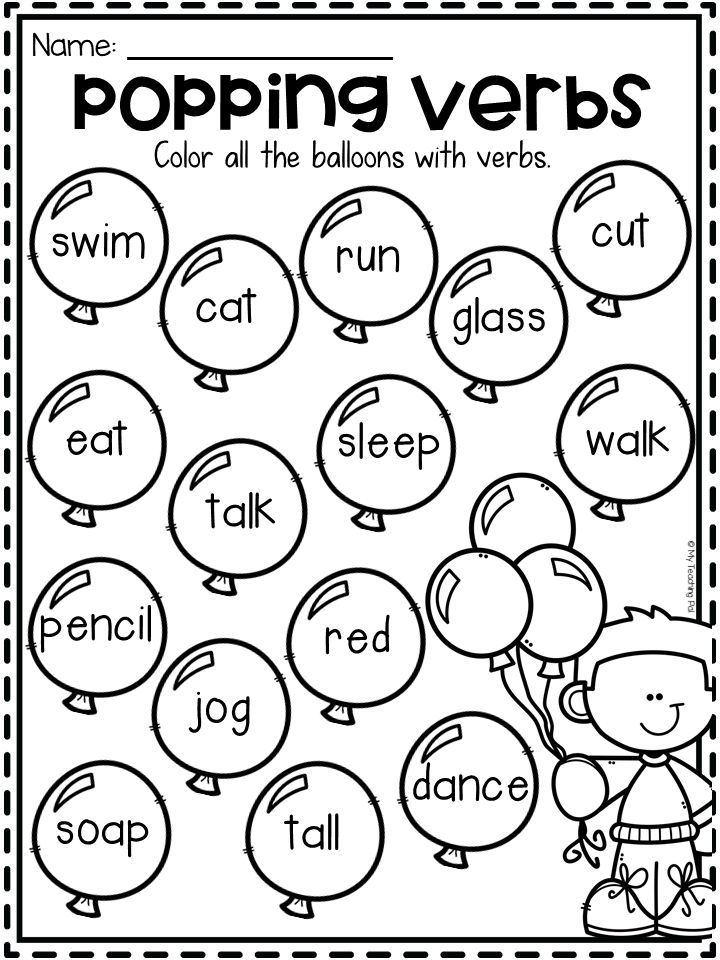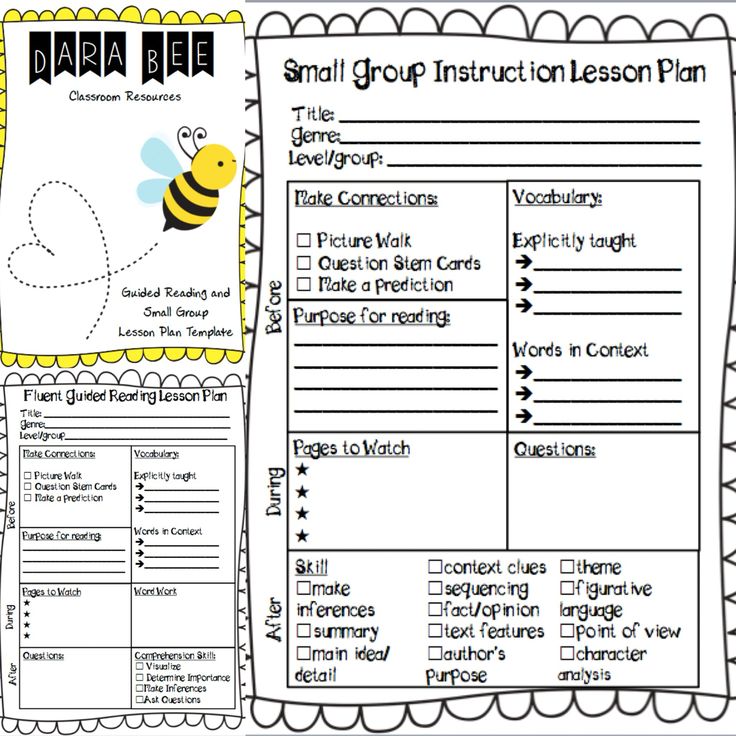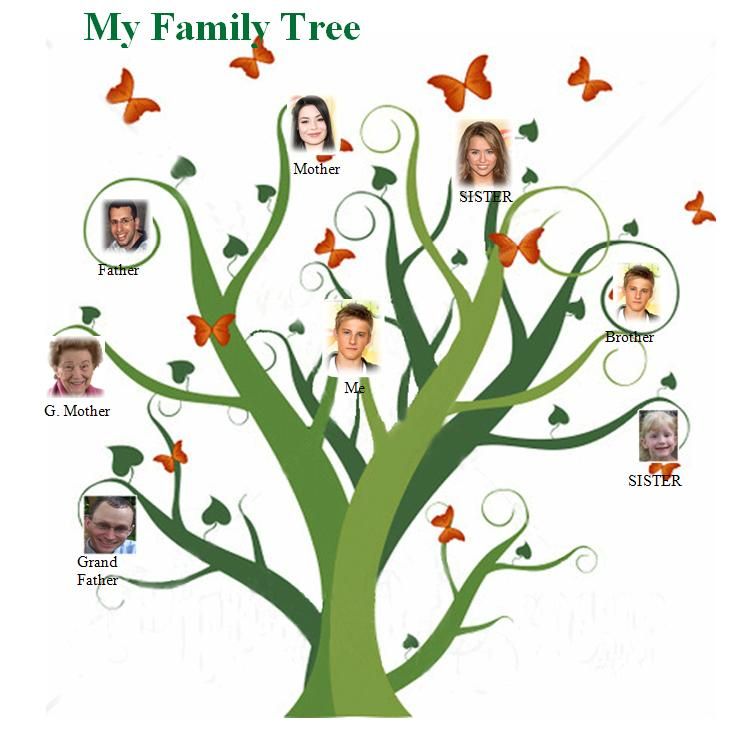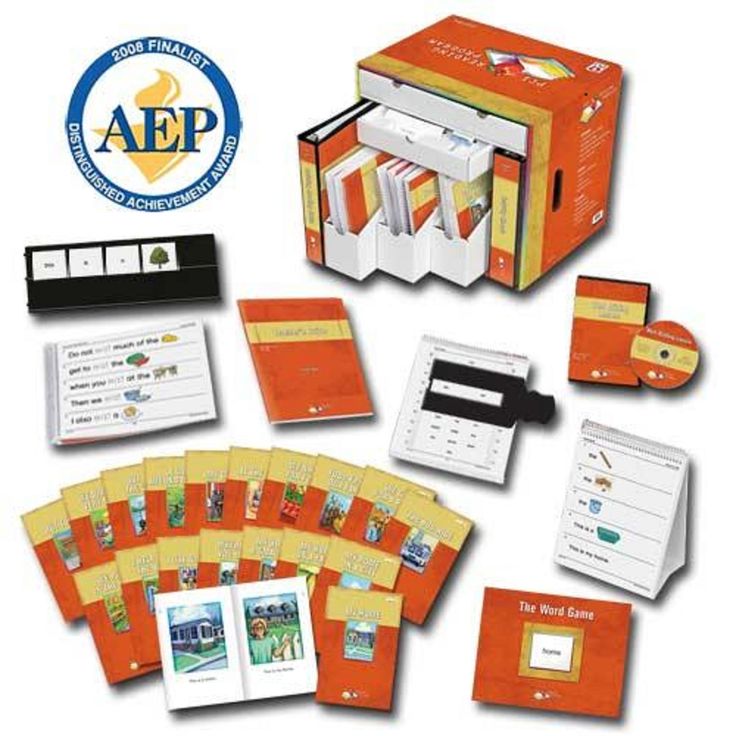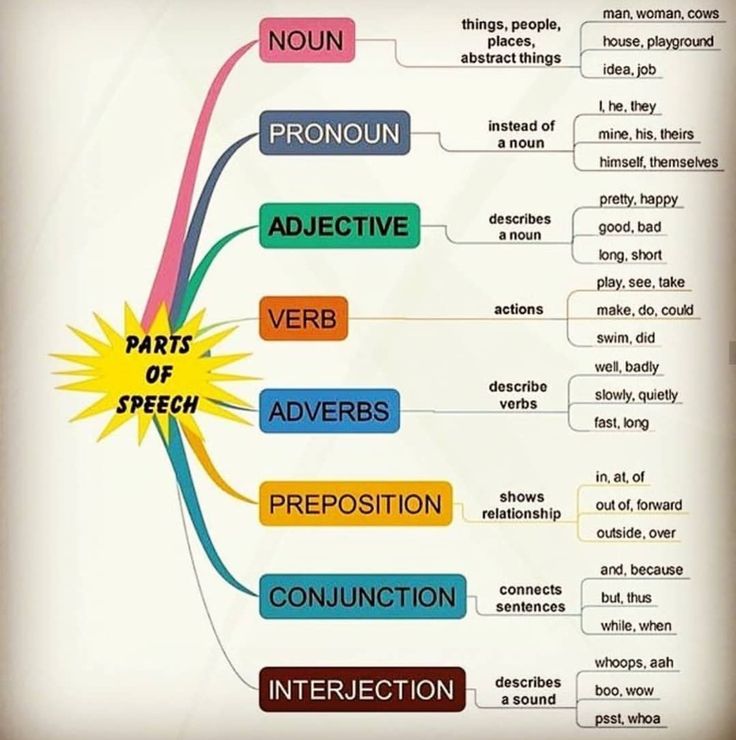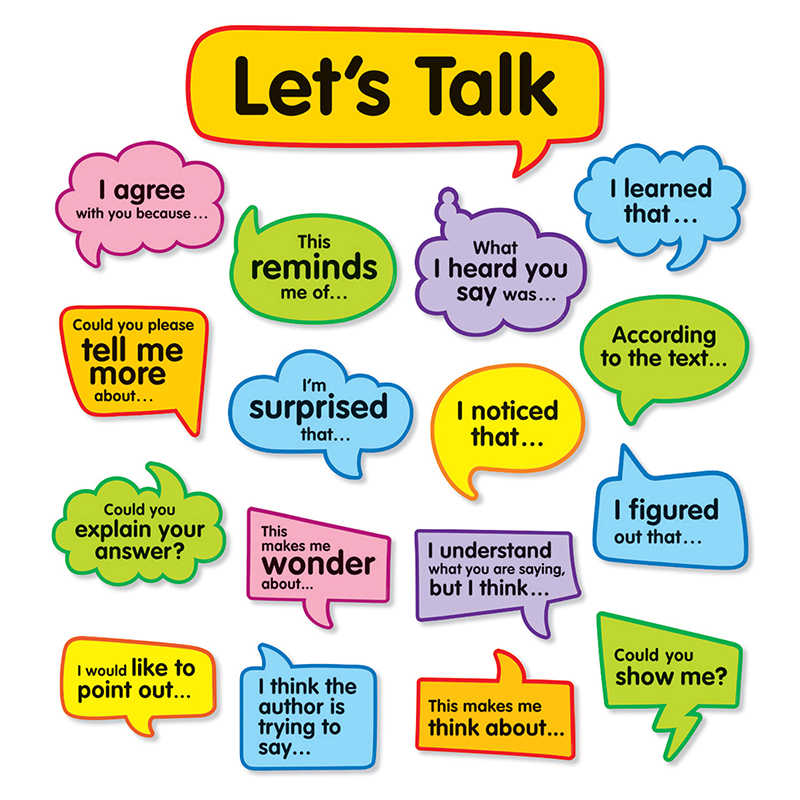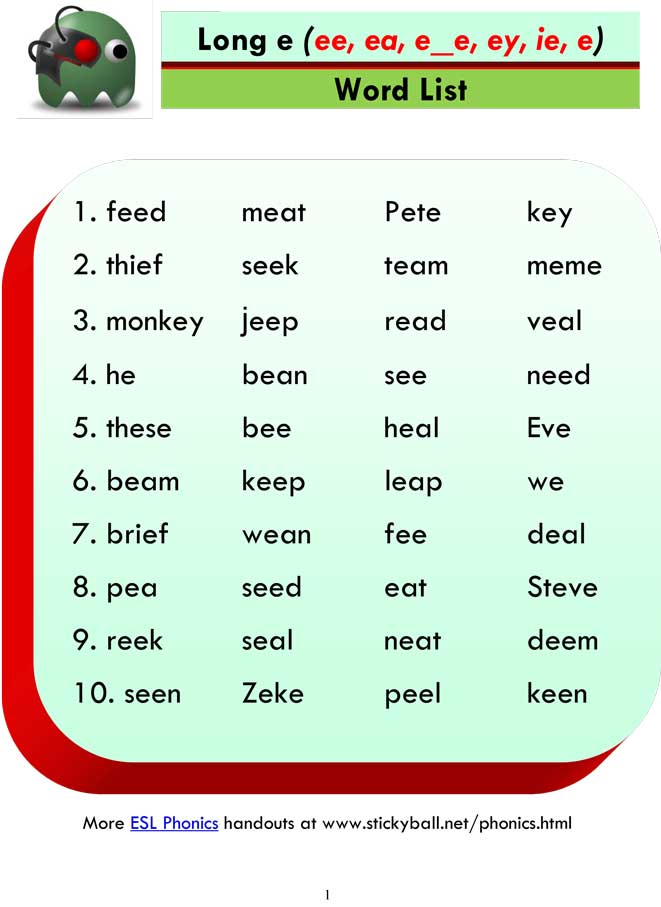Sounds of word
Sound Words: Examples of Onomatopoeia
DESCRIPTION
onomatopoeia example of sound word drip
SOURCE
Norbert Gál / EyeEm / Getty Images
PERMISSION
Used under permission of Getty Images
Sound words, also known as onomatopoeia, can make a poem or piece of writing appeal to the sense of hearing. Words like bam, whoosh or slap sound just like the thing they refer to. Take a look at five categories of onomatopoeic examples, grouped by letter combinations that are commonly used to represent certain sounds.
What Is Onomatopoeia?
The word onomatopoeia comes from the combination of two Greek words, onoma meaning "name" and poiein meaning "to make," so onomatopoeia literally means "to make a name (or sound)." That is to say that the word means nothing more than the sound it makes. The word
boing, for example, is simply a sound effect, but one that is very useful in making writing or storytelling more expressive and vivid.
Many onomatopoeic words can be verbs as well as nouns. Slap, for instance, is not only the sound that is made by skin hitting skin but also the action of hitting someone (usually on the face) with an open hand. Rustle is the sound of something dry, like paper, brushing together, but it can also indicate the action of someone moving papers around and causing them to brush together, thus making this noise.
Advertisement
Common Onomatopoeia Words & Letter Combinations
Many times, you can tell what an onomatopoeic word is describing based on letter combinations contained within the word. These combinations usually come at the beginning, but a few also come at the end. The following examples have been grouped according to how they are used.
Water Onomatopoeia Examples
Advertisement
Words related to water or other liquids often begin with sp- or dr-. Words that indicate a small amount of liquid often end in -le ( such as in sprinkle or drizzle).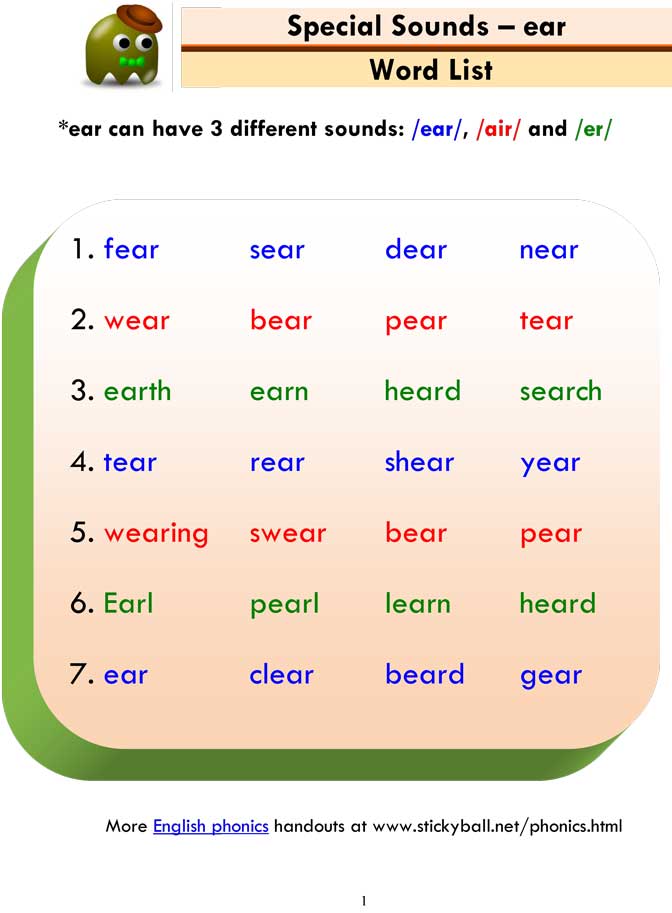 Water onomatopoeia examples include:
Water onomatopoeia examples include:
- bloop
- dribble
- drip
- drizzle
- splash
- spray
- sprinkle
- squirt
A poem by Australian poet Lee Emmett illustrates many onomatopoeia words related to water:
"water plops into pond
splish-splash downhill
warbling magpies in tree
trilling, melodic thrill
whoosh, passing breeze
flags flutter and flap
frog croaks, bird whistles
babbling bubbles from tap"
Vocal Onomatopoeia Examples
Onomatopoeia words are great ways to describe how a person sounds when they talk. Sounds that come from the back of the throat tend to start with a gr- sound, while sounds that come out of the mouth, through the lips, tongue and teeth, often begin with mu-. Examples of vocal onomatopoeia sounds include:
- ahem
- belch
- blurt
- chatter
- giggle
- growl
- groan
- grunt
- gulp
- gurgle
- eek
- moan
- mumble
- murmur
- squeal
- whimper
Advertisement
DESCRIPTION
onomatopoeia example of vocal sound word giggle
SOURCE
Tuan Tran / Moment / Getty Images
PERMISSION
Used under Getty Images license
Collision Onomatopoeia Examples
Collisions can occur between two or more objects.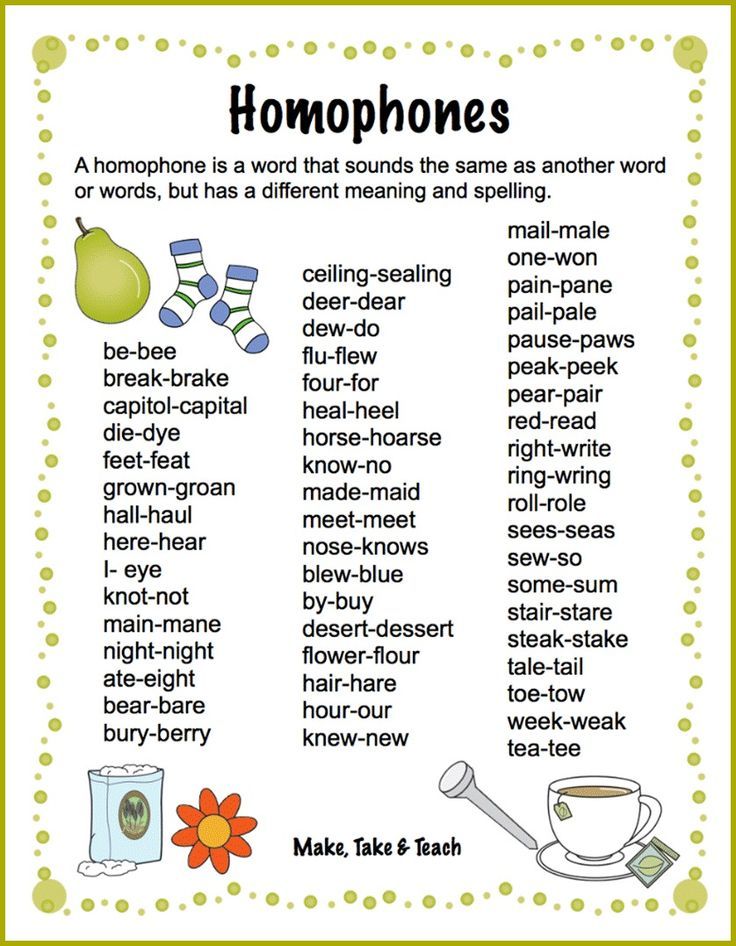 Sounds that begin with cl- usually indicate collisions between metal or glass objects, and words that end in -ng are sounds that resonate. Words that begin with th- usually describe dull sounds such as soft but heavy things hitting wood or earth. Examples of these sound words include:
Sounds that begin with cl- usually indicate collisions between metal or glass objects, and words that end in -ng are sounds that resonate. Words that begin with th- usually describe dull sounds such as soft but heavy things hitting wood or earth. Examples of these sound words include:
- bam
- bang
- clang
- clank
- clap
- clatter
- click
- clink
- crash
- crunch
- ding
- jingle
- knock
- screech
- slap
- smash
- thud
- thump
Air Onomatopoeia Examples
These words describe the sounds of air blowing through things or of things rushing through the air. Words related to air often start with wh-, include a "w", or end with -sh. Examples of air onomatopoeia sounds are:
- flutter
- fisst
- fwoosh
- gasp
- swish
- swoosh
- waft
- whiff
- whoosh
- whizz
- whip
Advertisement
DESCRIPTION
onomatopoeia example of air sound word whoosh
SOURCE
Kjerstin Gjengedal / Moment / Getty Images
PERMISSION
Used under Getty Images license
Advertisement
Animal Onomatopoeia Examples
Words related to animal noises often have long vowel sounds, such as "oo" or "ay.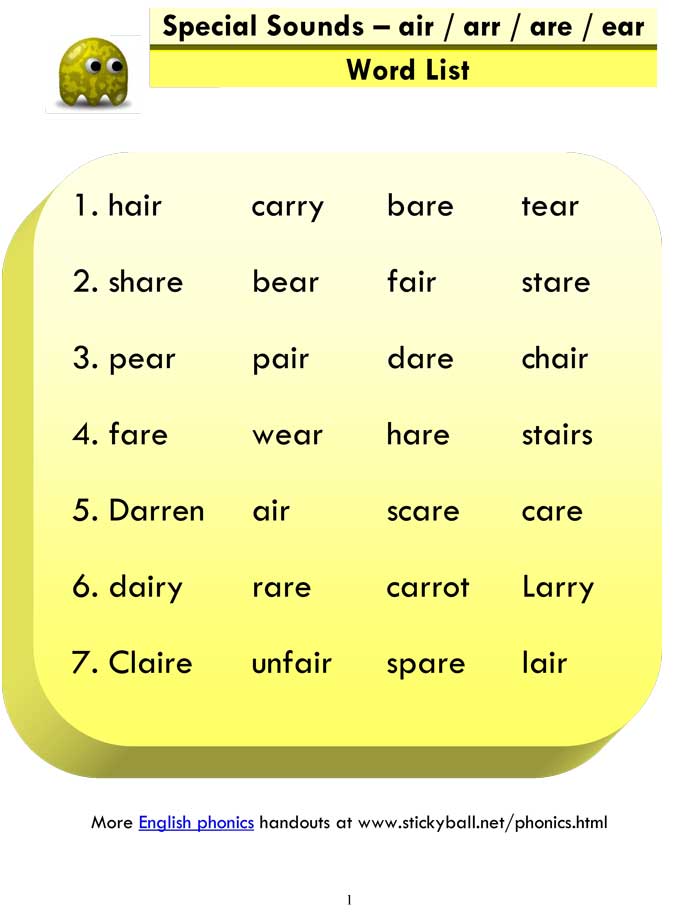 " If you’ve spent time in other countries, you may know that animals speak different languages too. Depending on where a chicken is from, for example, she might cluck-cluck, bok-bok, tok-tok, kot-kot, or cotcotcodet. English onomatopoeia words for animals noises are:
" If you’ve spent time in other countries, you may know that animals speak different languages too. Depending on where a chicken is from, for example, she might cluck-cluck, bok-bok, tok-tok, kot-kot, or cotcotcodet. English onomatopoeia words for animals noises are:
- arf
- bark
- bray
- buzz
- cheep
- chirp
- chortle
- cluck
- cock-a-doodle-doo
- cuckoo
- hiss
- honk
- howl
- purr
- ribbit
- tweet
- warble
Onomatopoeia in Action
Onomatopoeia is a fun, linguistic tool used in literature, songs and advertisements. Now that you've seen examples of the individual words, consider the following examples of onomatopoeia words in use.
- "Chug, chug, chug. Puff, puff, puff. Ding-dong, ding-dong. The little train rumbled over the tracks." - The Little Engine That Could by Watty Piper
- "Plop, plop, fizz, fizz, oh what a relief it is.
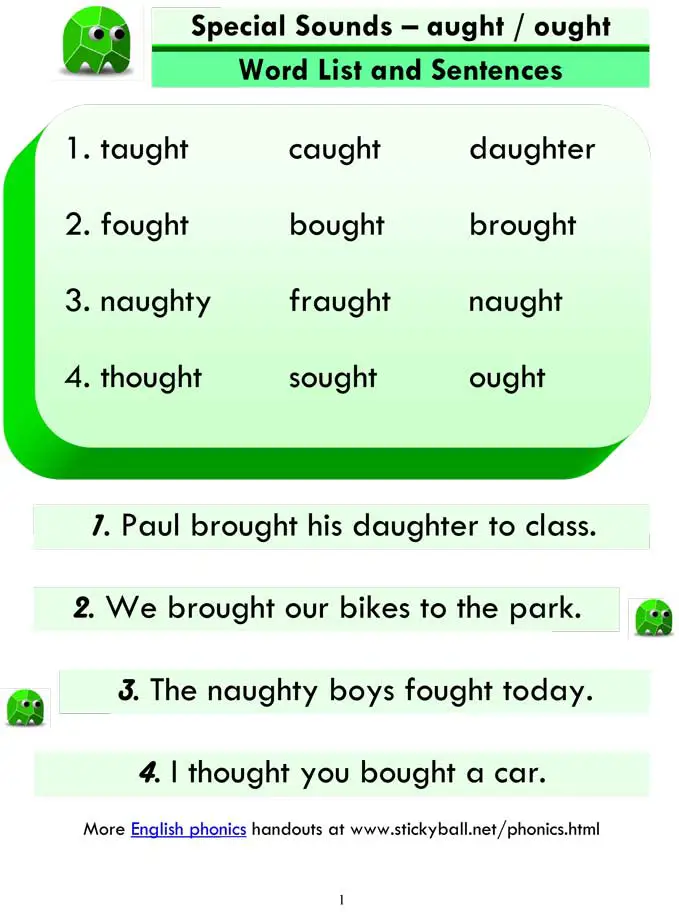 " - slogan of Alka Seltzer, U.S.
" - slogan of Alka Seltzer, U.S. - "Little Sal picked three berries and dropped them in her little tin pail ... kuplink, kuplank, kuplunk!" - Blueberries for Sal by Robert McCloskey
Take a look at the different onomatopoeia examples in Todd Rundgren's song, appropriately named Onomatopoeia.
"Onomatopoeia every time I see ya
My senses tell me hubba
And I just can't disagree.
I get a feeling in my heart that I can't describe. . .
It's sort of whack, whir, wheeze, whine
Sputter, splat, squirt, scrape
Clink, clank, clunk, clatter
Crash, bang, beep, buzz
Ring, rip, roar, retch
Twang, toot, tinkle, thud
Pop, plop, plunk, pow
Snort, snuck, sniff, smack
Screech, splash, squish, squeak
Jingle, rattle, squeal, boing
Honk, hoot, hack, belch."
Bringing Language to Life
Onomatopoeic words bring language alive in the reader's imagination by capturing a sound.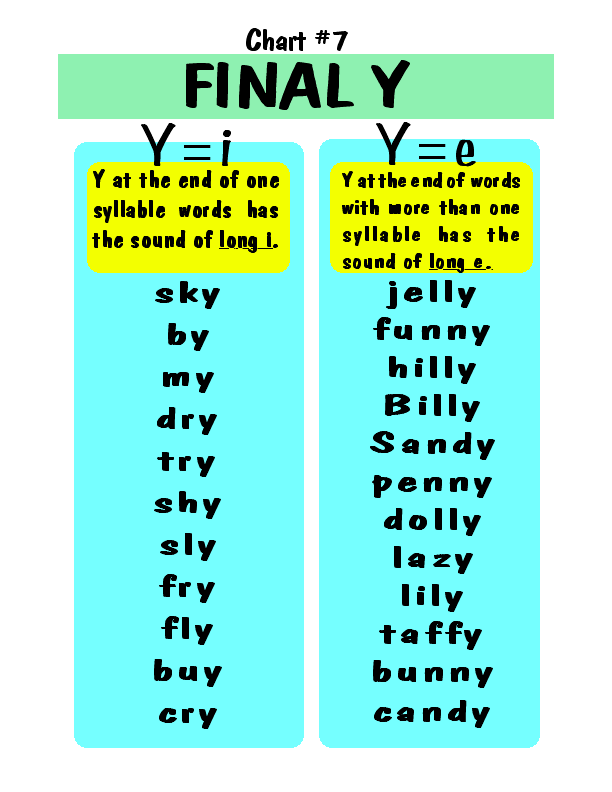 Reviewing examples of onomatopoeia words and their various sound categories is an excellent way to learn to recognize and understand the concept. For more onomatopoeia practice, take a look at these examples of onomatopoeia in nature.
Reviewing examples of onomatopoeia words and their various sound categories is an excellent way to learn to recognize and understand the concept. For more onomatopoeia practice, take a look at these examples of onomatopoeia in nature.
» Sounds and letters
» Sounds and letters
Learning the building blocks of words - sounds, their spellings, and word parts
2 Replies
If you want to store a large, complex system such as the English spelling system in a finite human brain, you have to organise it well.
To organise something, you first need an organising principle or principles.
If you want to use the relationship between letters and sounds as your organising principle for spelling (and most sensible people do), you can start from the letters and work to the sounds, or start from the sounds and work to the letters.
Starting from the letters
There are 26 letters in the English alphabet, but English also has a whole stack of letter combinations that can represent individual sounds:
- Two letter combinations, like “oo” as in “book”, “er” as in “her”, “ph” as in “phone” and “ey” as in “key”
- Three letter combinations, like “igh” as in “high”, “dge” as in “bridge”, “tch” as in “catch” and “ere” as in “here”.
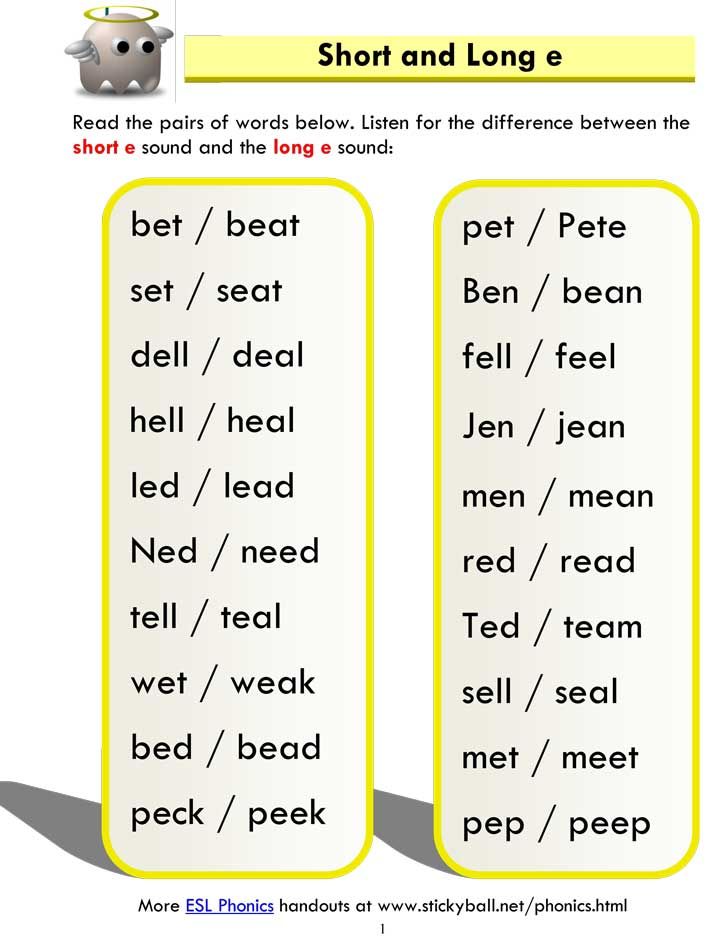
- Four letter combinations, like “eigh” as in “eight”, “aigh” as in “straight”, “augh” as in “caught”, and “ough” as in “bought”, “drought”, “dough”, “through”, “thorough” (but not “cough” or “tough”, where the “ou” and the “gh” represent different sounds, and just happen to be next to each other).
To add to the complexity, many letters and letter combinations can represent more than one sound, for example, the letter “y” represents four different sounds in the words “yes”, “by”, “baby” and “gym”. The spelling “ea” represents three different sounds in the words “beach”, “dead” and “break”.
As well as more common letter-sound patterns, there are letter-sound patterns that only occur in one or two words, like the “sth” in “asthma” and “isthmus”, and the “xe” in “axe”, “deluxe” and “annexe”.
It's an almost impossible task to use letters and letter patterns to organise your thinking about spelling, as there are simply so many of them and their relationships with sounds are so complex.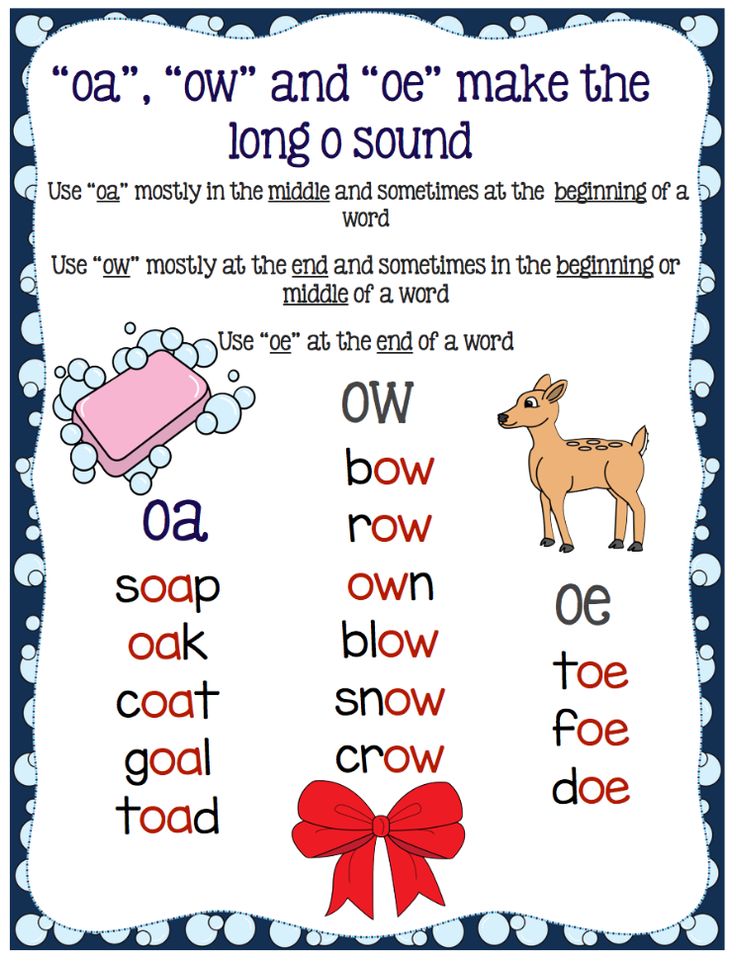
After a while it starts to seem that there must be thousands of sounds in English, whereas there are only 44[1] . So let's try using sounds as our organising principle.
Starting from sounds
The sounds of English are:
Three pairs of consonants made by stopping airflow in the mouth then letting it go:
- “p” as in pop, puppy and cantaloupe (voiceless lip sound).
- “b” as in bob, rubber, build and cupboard (voiced lip sound).
- “t” as in tot, butter, backed, joked, laundrette, torte, Thomas, receipt, debt, yacht, indict and pizza (voiceless tongue tip sound).
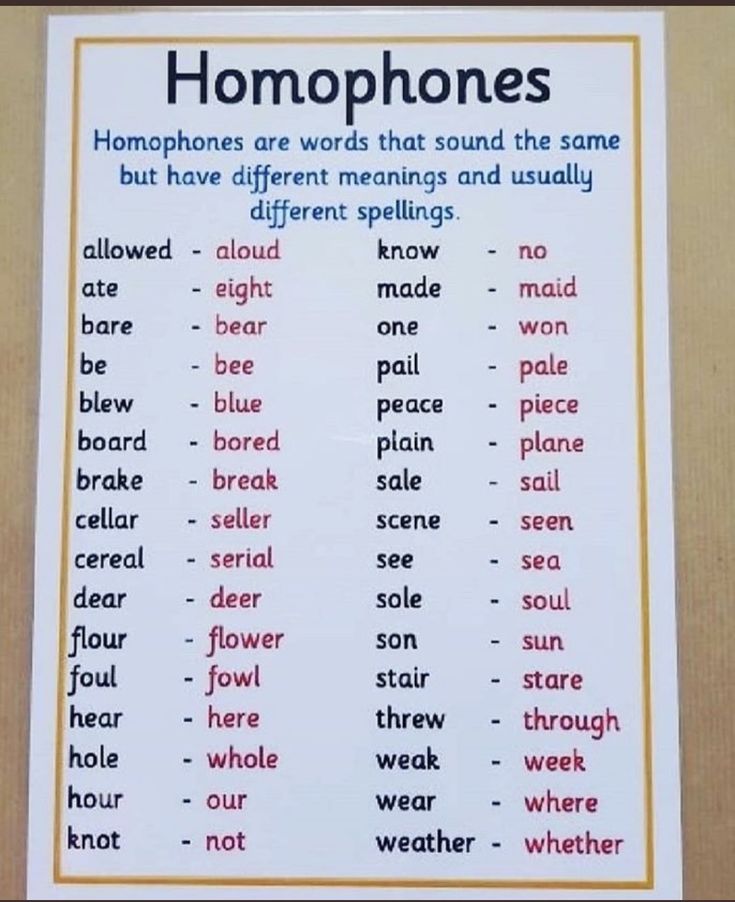
- “d” as in did, muddy, wagged, aide and jodhpurs (voiced tongue tip sound).
- “k” as in cot, king, luck, quit, chrome, mosque, khaki, liquor, accord, excel, Bourke, trekking, acquaint, racquet and zucchini (voiceless back of the tongue sound).
- “g” as in go, biggest, guide, ghoul and morgue (voiced back of the tongue sound).
Three pairs of consonants made through your nose using your voice:
- “m” as in mum, hammer, limb, autumn, programme and paradigm (lip sound).
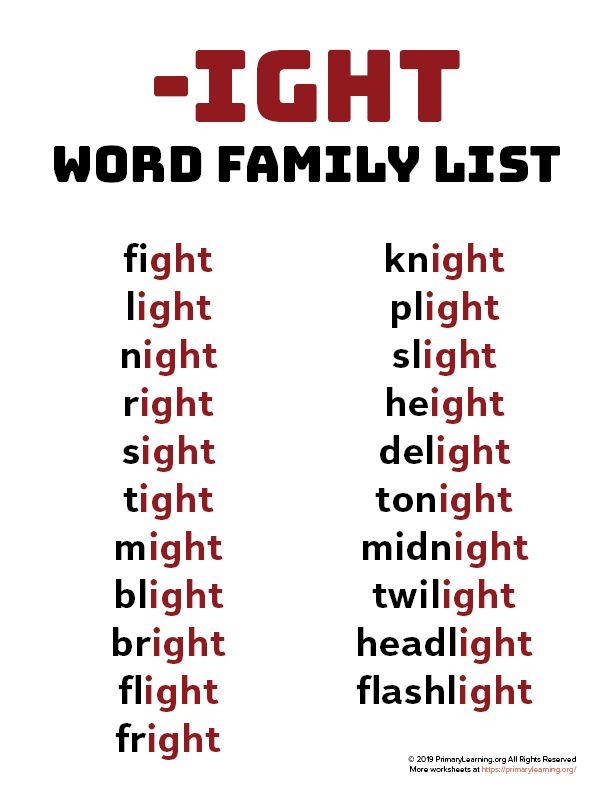
- “n” as in non, runner, know, reign, cayenne, pneumonia and mnemonic (tongue tip sound).
- “ng” as in wing, think and tongue (back of the tongue sound).
Four pairs of friction sounds made by squeezing air through narrow spaces in the mouth:
- “th” as in thin, Matthew and phthalates (voiceless tongue-between-teeth sound).
- “th” as in this and breathe (voiced tongue-between-teeth sound).
- “f” as in far, sniff, phone, cough, Chekhov, gaffe, carafe and often[2] (voiceless teeth on lip sound).
- “v” as in vat, love, skivvy, of, Stephen and Louvre (voiced teeth on lip sound).
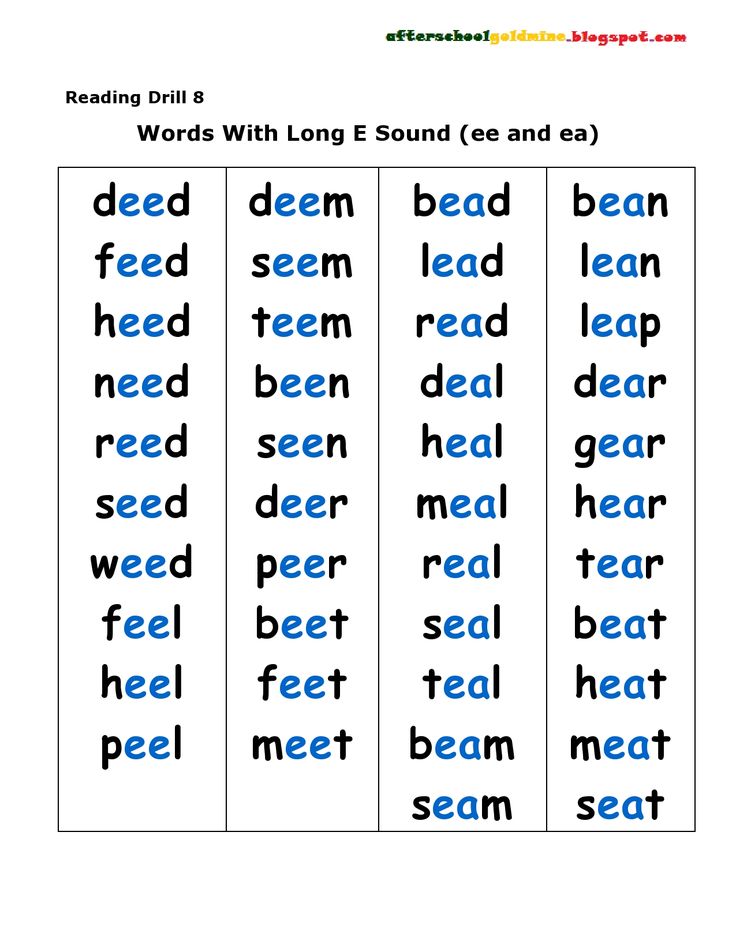
- “s” as in sell, city, voice, house, scent, pass, whistle, psychologist, quartz, coalesce, mousse, sword, asthma, and waltz.
- “z” as in zip, is, pause, dazzling, bronze, xylophone, dessert, business and tsar/czar.
- “sh” as in ash, lotion, passion, pension, facial, chef, schnitzel, moustache, ocean, sugar, appreciate, initiate, conscience, tissue, cushion, crescendo and fuchsia.
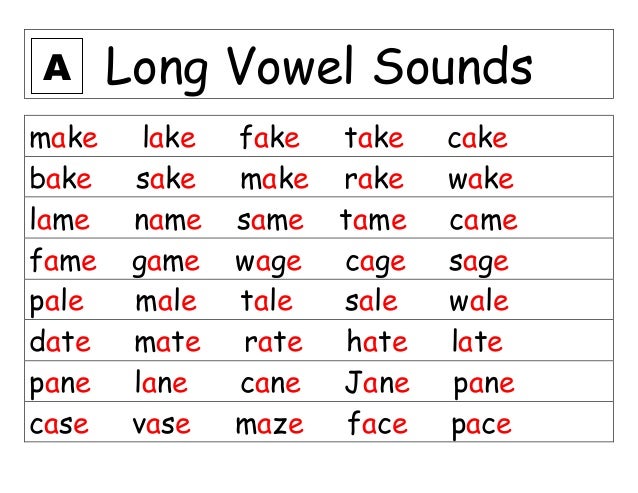
- “zh” as in beige, vision, pleasure, aubergine, déjà vu, seizure, equation and casuarina.
One pair of sounds made by stopping the air and then releasing it through a narrow space in the mouth:
- “ch” (a combination of “t” and “sh”) as in chair, hutch, creature, bocconcini, cappuccino, kitsch, luncheon, question, righteous, ciao and Czech.
- “j” (a combination of “d” and “zh”) as in jar, gem, sponge, ridge, budgie, religion, adjust, suggest, educate, soldier and hajj.
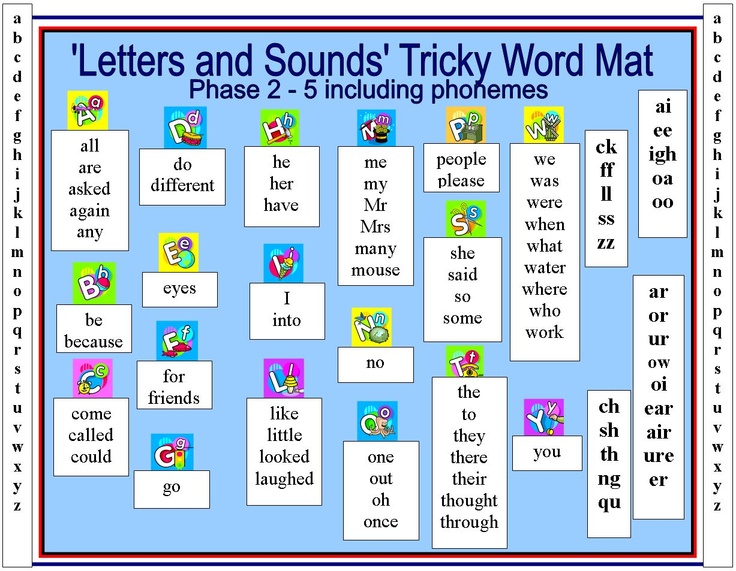
Four semi-vowels:
- “w” as in we, when, quack, one, marijuana and ouija.
- “y” as in yum, onion, hallelujah, tortilla and El Niño.
- “r” as in rip, wrist, barrel, rhubarb, diarrhoea and Warwick.
- “l” as in look, doll, grille, aisle, island and kohl.
One friction sound that has no pair:
- “h”, made by squeezing air through the back of your throat, as in hat, who, jojoba and junta.
So that makes 24 consonant sounds. Then there are 20 vowels:
Six “checked” vowels that require a consonant sound after them in English (sometimes called "short" vowels):
- “a” as in at, plait, salmon, meringue and Fahrenheit.

- “e” as in wet, deaf, any, said, says, friend, haemmorhage, leopard, leisure, bury and Geoff.
- “i” as in in, myth, passage, pretty, breeches, busy, marriage, sieve, women and bream.
- “o” as in on, swan, because, entree, cough, John, lingerie and bureaucracy.
- “u” as in up, front, young, blood, does and laksa.
- “oo” as in pull, good, could, wolf, tour and Worcestershire.
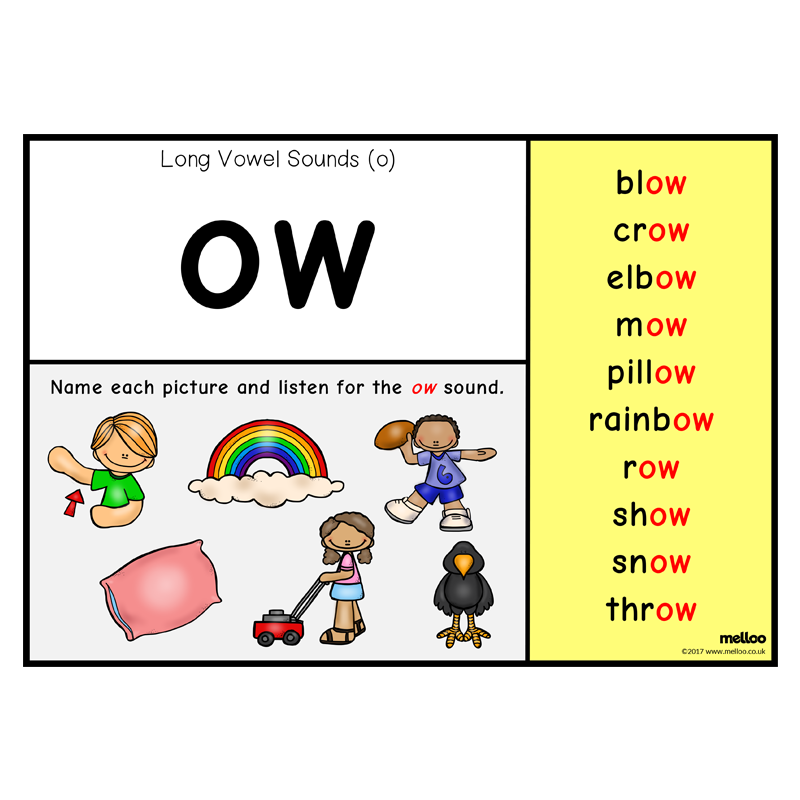
Six other vowels that are sometimes called “long vowels” (they're not really long, but they can be the last sound in a word):
- “ay” as in same, sail, say, danger, weigh, vein, they, café, reggae, great, purée, fete, straight, gauge, gaol, laissez-faire and lingerie.
- “I” as in like, hi, by, pie, high, type, chai, feisty, bye, height, kayak, eye, iron, maestro and naive.
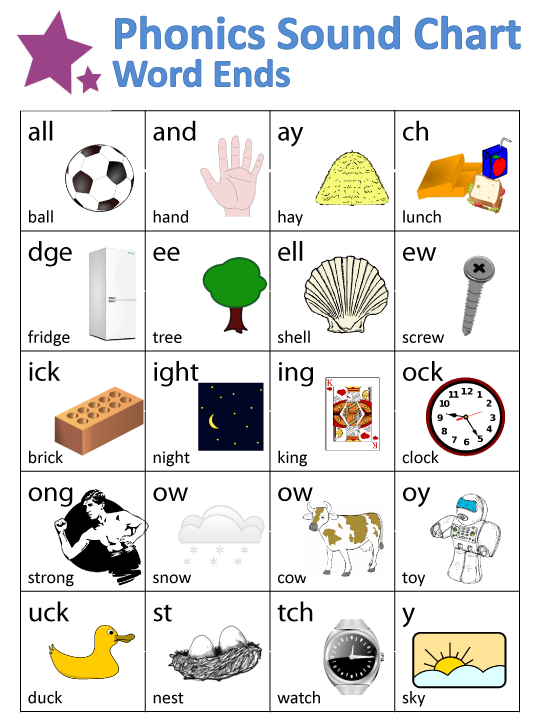
- “oh” as in rope, no, boat, goes, glow, plateau, soul, mauve, though, yolk, brooch, owe, sew and Renault.
- “ooh” as in food, June, chew, brutal, youth, clue, fruit, to, sleuth, shoe, roux, coup, pooh, through, two, manoeuvre and bouillion.
- “you” (a combination of “y” and “ooh”) as in use, few, cue, feud, tulip, beauty, pursuit, ewe and vacuum.
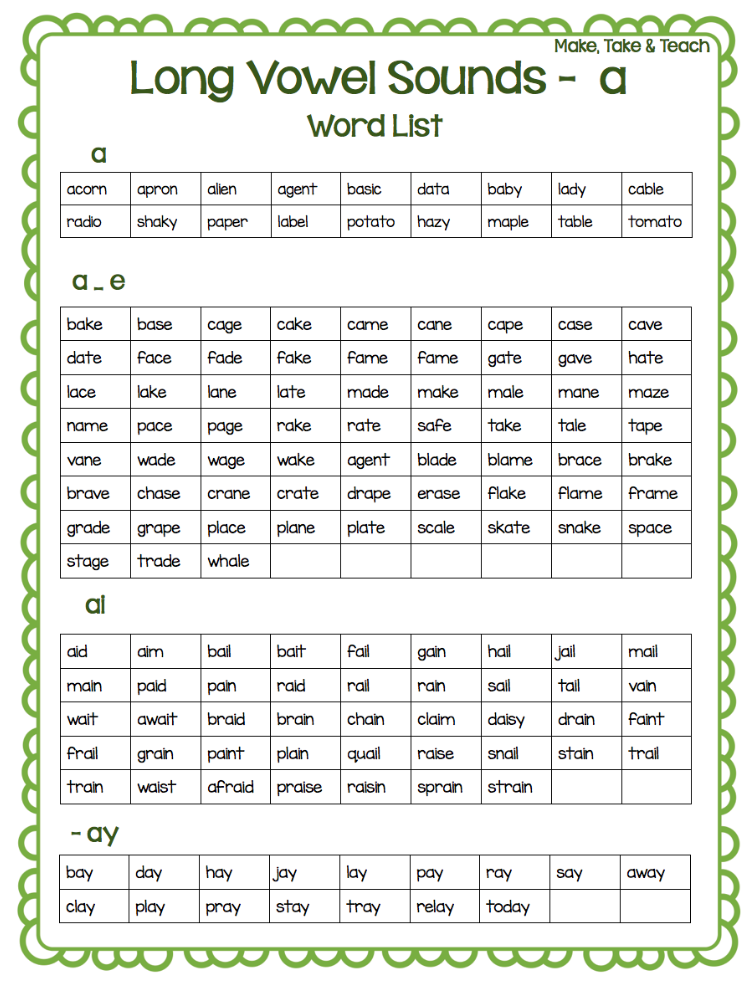
- “ee” as in bee, eat, field, me, these, jelly, taxi, turkey, ceiling, marine, paediatric, amoeba, quay, people, Grand Prix, fjord, ratatouille and Leigh.
Seven other vowels, some of which are called "r-controlled" vowels in some spelling books:
- “ar” as in arm, past, calf, blah, charred, are, baa, clerk, aunt, heart, bazaar and bizarre.
- “er” as in fern, curl, dirt, word, pearl, purr, err, whirred, slurred, masseur, journalist, milieu, were, colonel, myrrh, myrtle and hors d’oeuvre.

- “aw” as in saw, cord, more, court, faun, bought, wart, all, door, chalk, taught, board, dinosaur, baulk, sure, broad, awesome, you’re, corps, extraordinaire, hors d’oeuvre and assurance.
- “ou” as in out, cow, drought, kauri, Maori and miaow.
- “oy” as in boy, soil, Freud, lawyer and Despoja.
- “air” as in care, fair, pear, parent, aerial, solitaire, there, sombrero, heir, their, they’re, prayer, mayor and yeah.
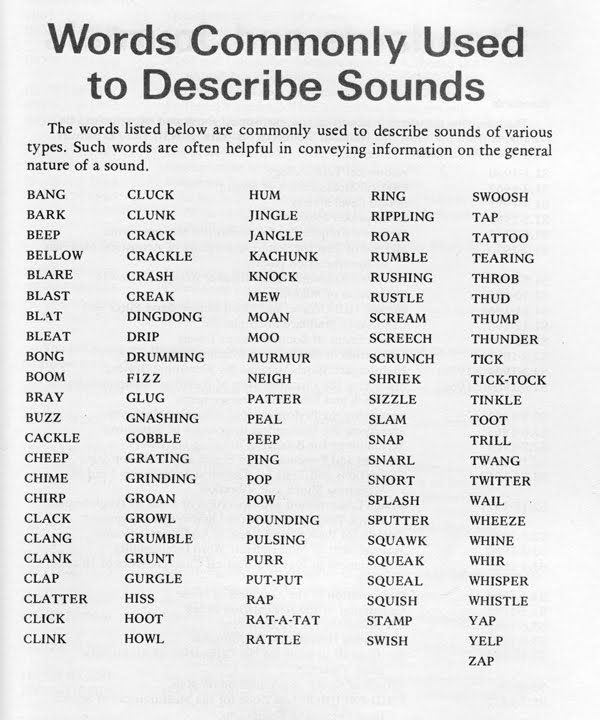
- “ear” as in dear, beer, tier, ere, bacteria, souvenir, Hampshire, weird and Shakespeare.
One unstressed vowel, heard mostly in multisyllable words:
- “uh” as in fire, super, metre, buzzard, tractor, odour, jealous, nature, mynah, violent, pencil, cherub, delicate, granite, purpose, minute, restaurant, aesthetic, martyr, mischievous, borough, portrait, foreign, papier-mache, cupboard, sulphur, porpoise, circuit, tapir…
The unstressed vowel also occurs in spoken sentences in small, grammatical words like "a" and "the".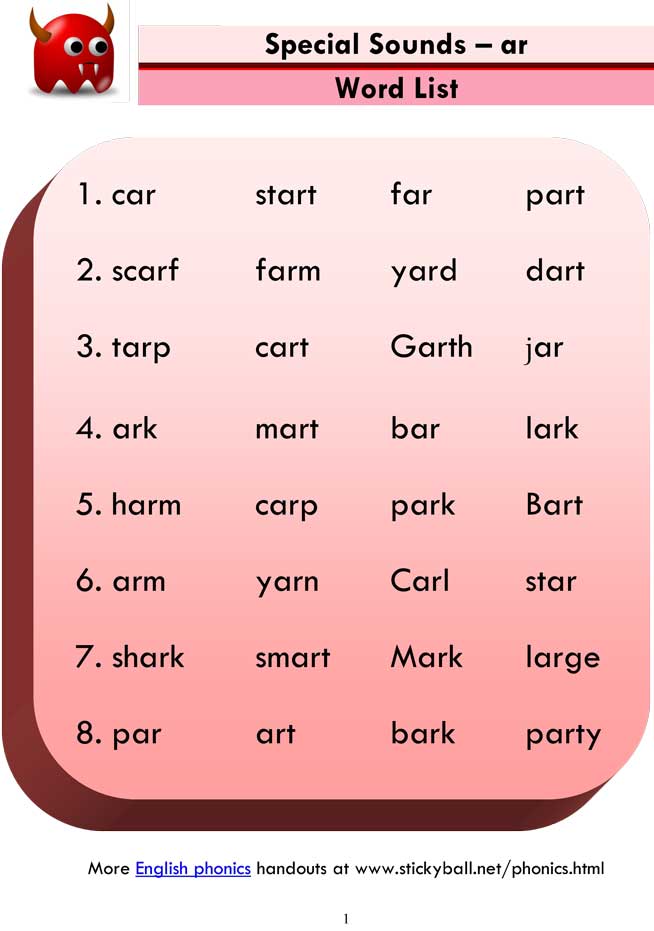 Because these words occur very frequently, this can be a source of much confusion about how basic vowels are spelt.
Because these words occur very frequently, this can be a source of much confusion about how basic vowels are spelt.
This is still a long list, but at least it's possible to put a lid on it, by teaching the main spellings for all the sounds in one-syllable words, then the main additional spellings in longer words.
Eventually you find you've got most words covered, and there's just a list of weird ones for each sound that don't follow any major pattern, and are therefore also memorable.
Learners can make up a spelling collection with a page for each sound, and list all the spellings they know in groups. In fact there are books you can buy for this purpose such as Soundasaurus, but I generally quibble with some of the categories, and prefer to use my own Spelling Collection. Crossings-out, sticky notes and/or extra pages added in later are good evidence that learners have been actively thinking and learning about the relationship between sounds and letters.
[1] Linguists will always argue about how many sounds there are in English, because the mouth is a mushy place without clear boundaries – for example, the “l” sound at the start of “look” is phonetically different from the one at the end of “hall”, and the sound “ay” in “play” and “ie” as in “time” are technically two sounds, but slicing things that finely doesn’t really help with learning spelling.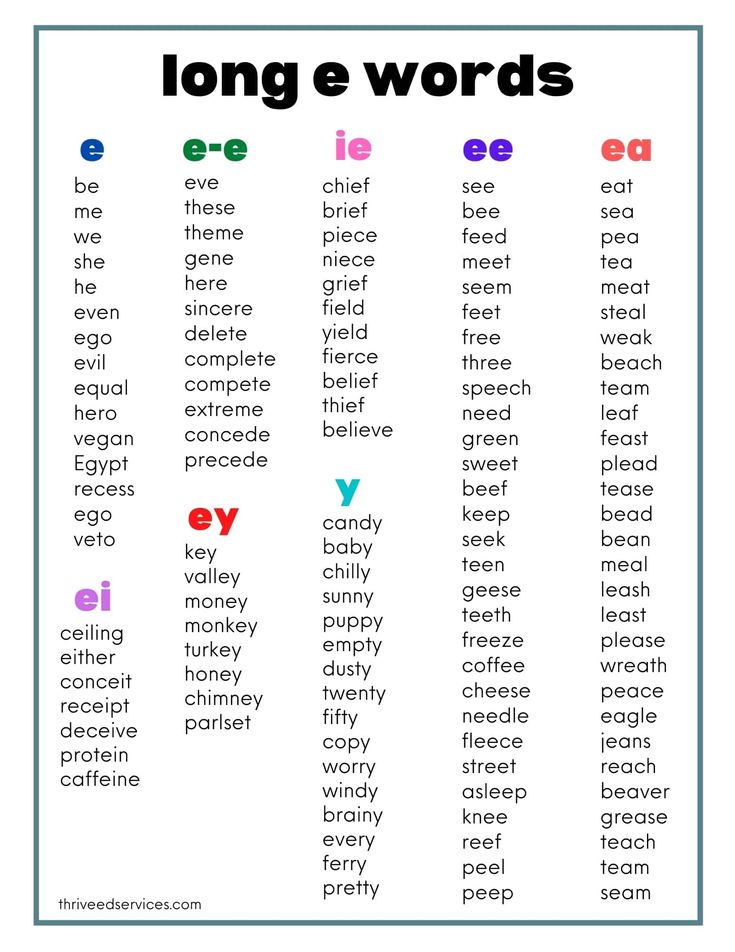 Most people say there are between 42 and 44 sounds for the purposes of teaching spelling (depending on whether you call "ear" and "air" separate spellings or not).
Most people say there are between 42 and 44 sounds for the purposes of teaching spelling (depending on whether you call "ear" and "air" separate spellings or not).
[2] and lieutenant if you speak British English, but actually this word comes from French and means someone standing in (in lieu) for the tenant or office-holder, so the American pronunciation (“loo-tenant”, not “leff-tenant”) is closer to the original French.
« Spelling rules
Sounds and letters of the Russian language - scheme, table, transcription
Contents:
• What is sound?
• What sounds are there?
• How are sounds pronounced?
• Transcription of the word
• Color scheme
Sounds belong to the phonetics section. The study of sounds is included in any school curriculum in the Russian language. Acquaintance with sounds and their main characteristics occurs in the lower grades. A more detailed study of sounds with complex examples and nuances takes place in middle and high school. This page provides only basic knowledge of the sounds of the Russian language in a compressed form. If you need to study the device of the speech apparatus, the tonality of sounds, articulation, acoustic components and other aspects that are beyond the scope of the modern school curriculum, refer to specialized textbooks and textbooks on phonetics. nine0008
Acquaintance with sounds and their main characteristics occurs in the lower grades. A more detailed study of sounds with complex examples and nuances takes place in middle and high school. This page provides only basic knowledge of the sounds of the Russian language in a compressed form. If you need to study the device of the speech apparatus, the tonality of sounds, articulation, acoustic components and other aspects that are beyond the scope of the modern school curriculum, refer to specialized textbooks and textbooks on phonetics. nine0008
What is sound?
Sound, like words and sentences, is the basic unit of language. However, the sound does not express any meaning, but reflects the sound of the word. Thanks to this, we distinguish words from each other. Words differ in the number of sounds (port - sport, crow - funnel), set of sounds (lemon - estuary, cat - mouse), sequence of sounds (nose - dream, bush - knock) up to a complete mismatch of sounds (boat - boat, forest - park ).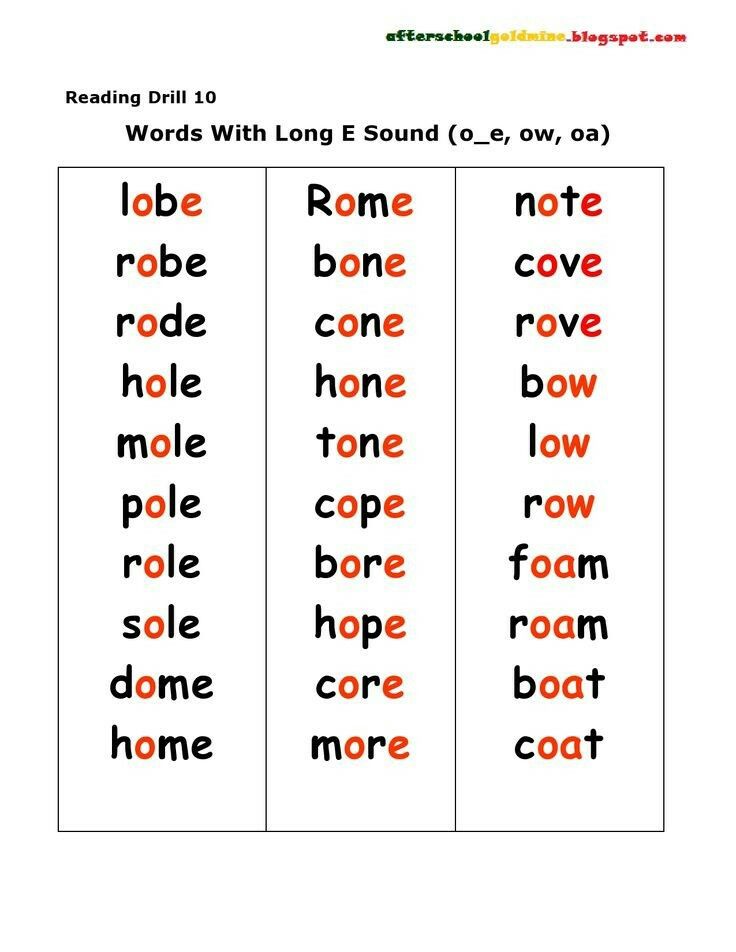
What sounds are there?
In Russian, sounds are divided into vowels and consonants. There are 33 letters and 42 sounds in Russian: 6 vowels, 36 consonants, 2 letters (ь, ъ) do not indicate a sound. The discrepancy in the number of letters and sounds (not counting b and b) is due to the fact that there are 6 sounds for 10 vowels, 36 sounds for 21 consonants (if we take into account all combinations of consonant sounds deaf / voiced, soft / hard). On the letter, the sound is indicated in square brackets.
There are no sounds: [e], [e], [yu], [i], [b], [b], [g '], [w '], [c '], [th], [h ], [sch]. nine0008 Scheme 1. Letters and sounds of the Russian language. Scheme 1.1. Letters and sounds of the Russian language. Scheme 1.2. Vowels and sounds of the Russian language. Scheme 1.3. Consonants and sounds of the Russian language. Scheme 1.4. Russian letters that do not represent sounds.
How are sounds pronounced?
We pronounce sounds while exhaling (only in the case of the interjection "a-a-a", expressing fear, the sound is pronounced while inhaling.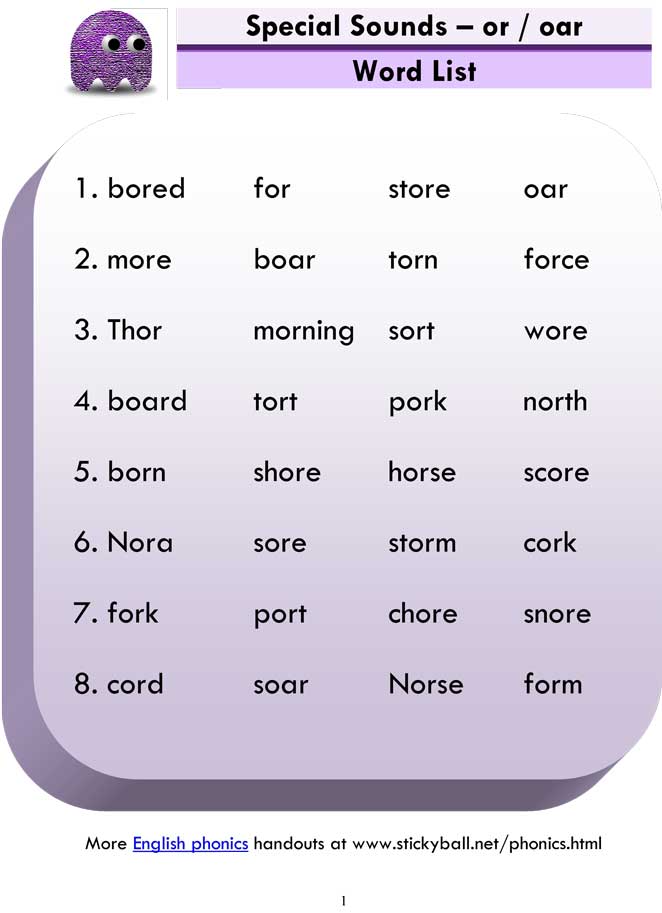 ). The division of sounds into vowels and consonants is related to how a person pronounces them. Vowel sounds are pronounced by the voice due to the exhaled air passing through the tense vocal cords and freely exiting through the mouth. Consonant sounds consist of noise or a combination of voice and noise due to the fact that the exhaled air meets an obstacle in its path in the form of a bow or teeth. Vowel sounds are pronounced loudly, consonant sounds are muffled. A person is able to sing vowel sounds with his voice (exhaled air), raising or lowering the timbre. Consonant sounds cannot be sung, they are pronounced equally muffled. Hard and soft signs do not represent sounds. They cannot be pronounced as an independent sound. When pronouncing a word, they affect the consonant in front of them, make it soft or hard. nine0008
). The division of sounds into vowels and consonants is related to how a person pronounces them. Vowel sounds are pronounced by the voice due to the exhaled air passing through the tense vocal cords and freely exiting through the mouth. Consonant sounds consist of noise or a combination of voice and noise due to the fact that the exhaled air meets an obstacle in its path in the form of a bow or teeth. Vowel sounds are pronounced loudly, consonant sounds are muffled. A person is able to sing vowel sounds with his voice (exhaled air), raising or lowering the timbre. Consonant sounds cannot be sung, they are pronounced equally muffled. Hard and soft signs do not represent sounds. They cannot be pronounced as an independent sound. When pronouncing a word, they affect the consonant in front of them, make it soft or hard. nine0008
Transcription of a word
Transcription of a word is a recording of sounds in a word, that is, in fact, a record of how the word is pronounced correctly.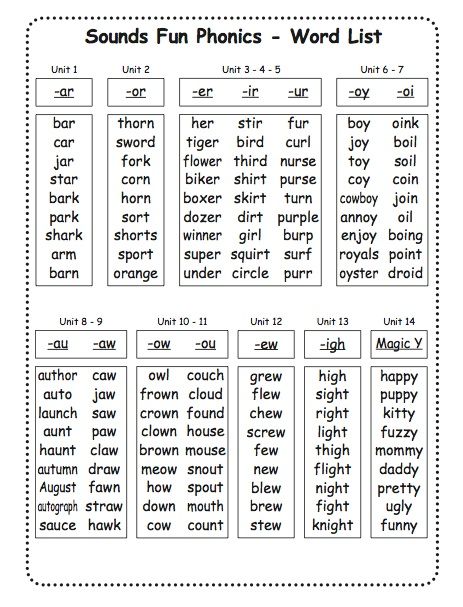 Sounds are enclosed in square brackets. Compare: a is a letter, [a] is a sound. The softness of consonants is indicated by an apostrophe: p - letter, [p] - hard sound, [p '] - soft sound. Voiced and voiceless consonants are not marked in writing. The transcription of the word is written in square brackets. Examples: door → [dv'er '], thorn → [kal'uch'ka]. Sometimes stress is indicated in transcription - an apostrophe before a vowel stressed sound. nine0008
Sounds are enclosed in square brackets. Compare: a is a letter, [a] is a sound. The softness of consonants is indicated by an apostrophe: p - letter, [p] - hard sound, [p '] - soft sound. Voiced and voiceless consonants are not marked in writing. The transcription of the word is written in square brackets. Examples: door → [dv'er '], thorn → [kal'uch'ka]. Sometimes stress is indicated in transcription - an apostrophe before a vowel stressed sound. nine0008
There is no clear correspondence between letters and sounds. In the Russian language, there are many cases of substitution of vowel sounds depending on the place of stress of a word, substitution of consonants or dropping out of consonant sounds in certain combinations. When compiling a transcription of a word, the rules of phonetics are taken into account.
Color scheme
In phonetic analysis, words are sometimes drawn with color schemes: letters are painted with different colors depending on what sound they mean.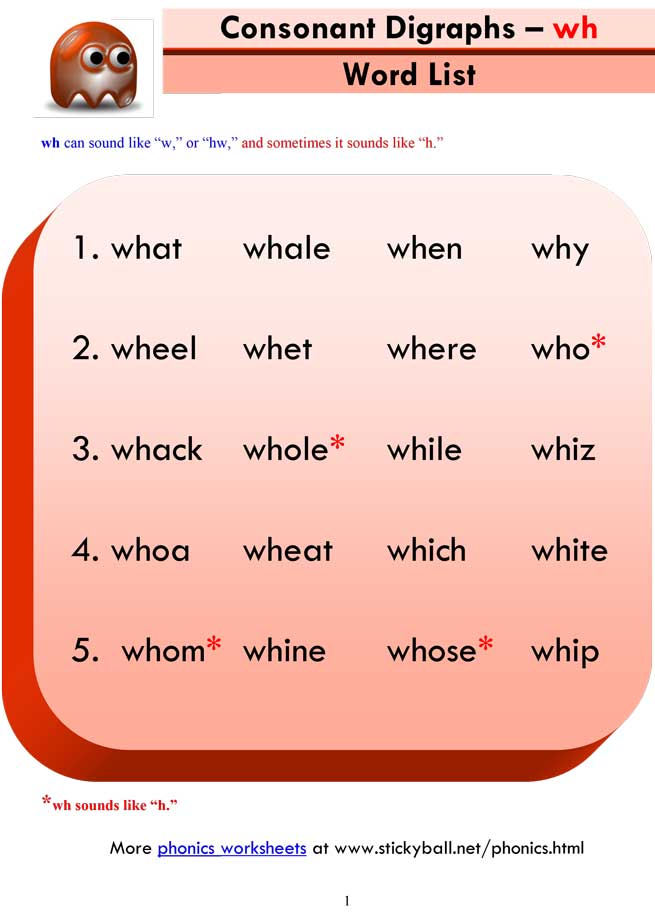 Colors reflect the phonetic characteristics of sounds and help you visualize how a word is pronounced and what sounds it consists of. nine0008
Colors reflect the phonetic characteristics of sounds and help you visualize how a word is pronounced and what sounds it consists of. nine0008
All vowels (stressed and unstressed) are marked with a red background. Iotated vowels are marked green-red: green means a soft consonant sound [y ‘], red means the vowel following it. Consonants with solid sounds are colored blue. Consonants with soft sounds are colored green. Soft and hard signs are painted in gray or not painted at all.
| Vowels0040 | |
| Consistent | Tsh zh zh zhb z k l m h r ch chhh |
| b, b. | b |
- vowel, - vowel iot - hard consonant, - soft consonant, - soft or hard consonant, - does not mean a sound.
The blue-green color is not used in the schemes for phonetic analysis, since a consonant cannot be both soft and hard at the same time. The blue-green color in the table above is only used to show that the sound can be either soft or hard.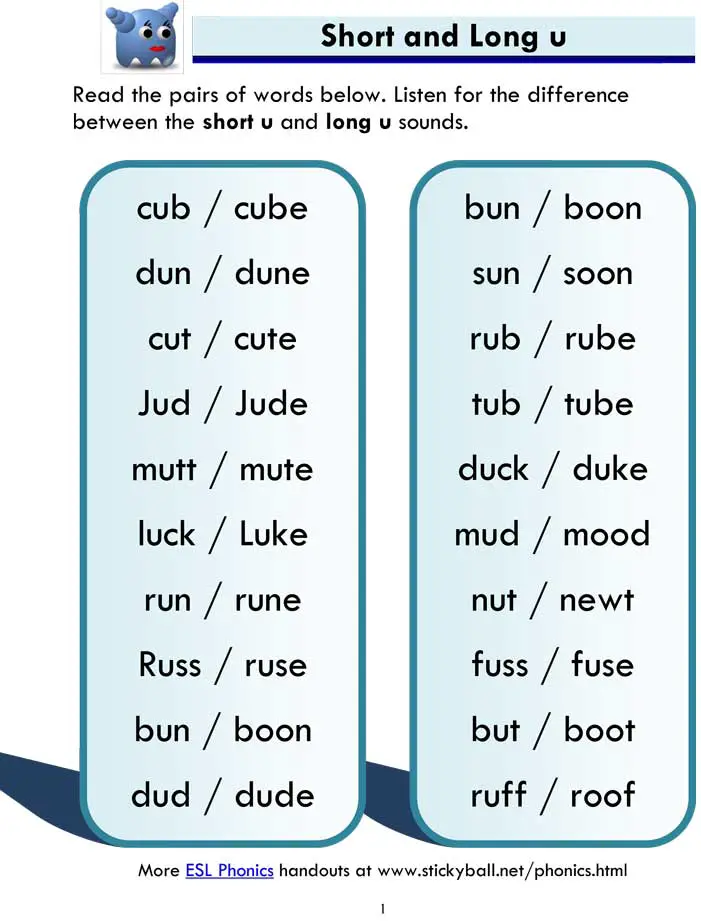 nine0008
nine0008
Words with the letter ё must be written through ё. Phonetic parsing of the words "everything" and "everything" will be different!
Vowels and vowel sounds of the Russian language - scheme, table
Contents:
• Vowels and sounds
• Stressed and unstressed
• Iotated
In Russian there are 10 vowels, 6 vowels. Vowels: a , and, e, e, o, u, s, e, u, i. Vowel sounds: [a], [o], [y], [e], [i], [s]. In the school curriculum, vowel sounds are indicated in the diagrams in red. In elementary grades, they explain: vowels are called so because they “voice”, they are pronounced “voiced”, while consonants got such a name because they “agree” with vowels. nine0008 Scheme 1. Vowels and vowel sounds of the Russian language.
Stressed and unstressed vowels
Vowel sounds are:
- stressed: juice [o] - ice ['o], forest ['e] - mayor [e], drill [u] - hatch ['u],
- unstressed: in about yes [a], from y dak [y], l e juice [i].
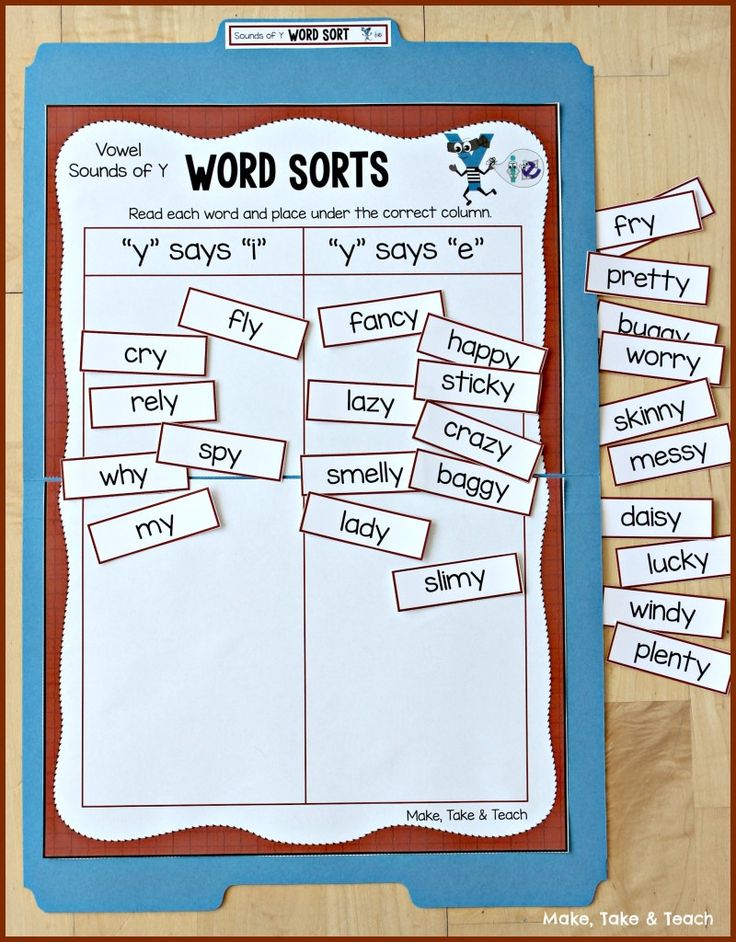
It is correct to say "stressed syllable" and "unstressed syllable". Instead of "stress falls on a vowel" say "stress falls on a syllable with a vowel." However, in the literature there are formulations "stressed vowel" and "unstressed vowel". nine0008
Stressed vowels are in a strong position, they are pronounced with more force and intonation. Unstressed vowels are in a weak position, they are pronounced with less force and may be subject to change.
The designation of the letter e in a weak position differs in different school programs. Above we showed the sound [and], in other school programs the designation [e] is found, in the institute program - [e and ] (e with an overtone and).
Scheme 2. Division of vowels into stressed and unstressed. nine0002 In Russian there are compound words with primary and secondary stress. In them, with a strong intonation, we highlight the main stress, with a weak intonation - a secondary one. For example, in the word foam blocks, the main stress falls on the syllable with the letter o, the secondary stress on the syllable with the letter e.